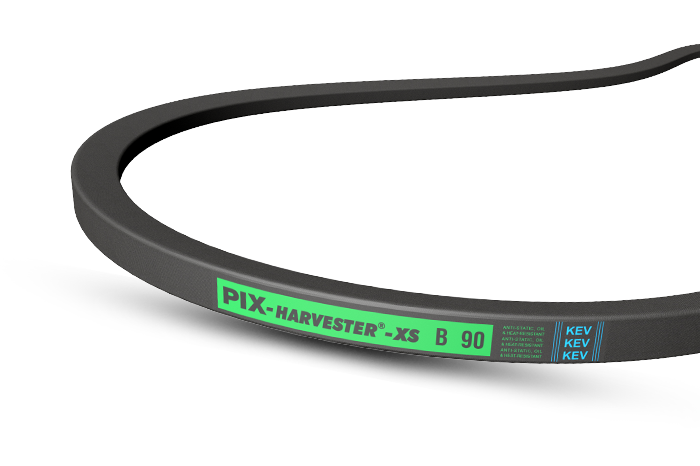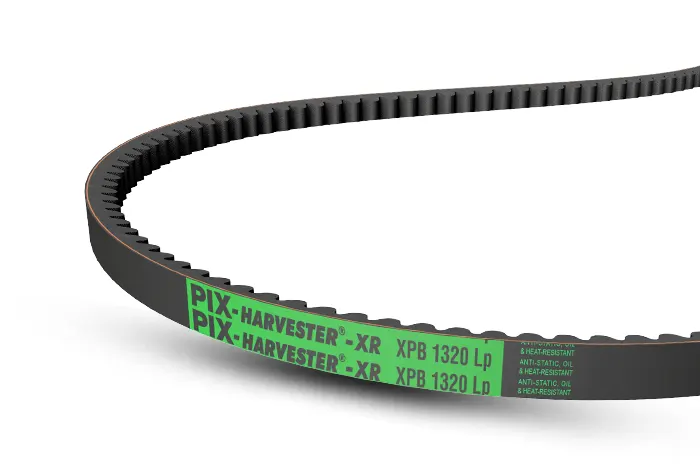Product Range
PIX-Harvester®-XS
- Classical section: A, B, C, D, E, 20, 25
- Wedge section: SPZ, SPA, SPB, 19, SPC
- Narrow Section: 3V, 5V, 8V
PIX-Harvester®-HXS Banded Belts
- Section : HA, HB, HC, HD, HE, HSPZ, HSPA, HSPB, HSPC, H3V, H5V
PIX-Harvester®-VS Variable Speed Belts
- Sections: 25x13, 32x15, 38x18, 45x20, 51x22, 13x11, 15x9, 19x11, 21x9, 22x11, 22x16, 22x16, 30x12, 33x22,38x23, 40x20, 55x22, 60x25, 68x24
PIX-Harvester®-DS Hexagonal Belts
- Section : AA, BB, CC, 25, DD
PIX-DryCover®-XS
- Sections: 3L, 4L, 5L
PIX-MUSCLE®-XS3 High Power, Maintenance-free Belts
- Sections: SPZ, SPA, SPB, SPC, 3V, 5V, 8V
PIX-Harvester®-AGF Flat Belts
- Sections: 50Fx6, 75Fx6, 80Fx6, 95Fx6, 100Fx6, 114Fx6, 120Fx6, 125Fx6, 127Fx6, 135Fx6, 140Fx6, 150Fx6
Reference Standard
- BS 3790, DIN 2215, RMA IP 22, ISO 4184, IS 2494, IS 11038, ISO 3410, BS 3733, ASAE 211.3 & 4
Product Range
PIX-Harvester®-XR
- Classical section: AX, BX, CX
- Wedge section: XPZ, XPA, XPB, XPC
- Narrow Section: 3VX, 5VX
PIX-Harvester®-HXR Banded Belts
- Sections: HAX, HBX, HCX, H5VX, HXPA, HXPB, HXPC, H3VX, H5VX
PIX-Harveser®-XV Variable Speed Belts
- Sections: 22V-A22/1422V, 30V-A22/1922V, 37V-A22/2322V, 30V-A26/1926V, 46V-A26/2926V, 51V-A26/3226V, 40V-A30/2530V, 51V-A30/3230V, 70V-A30/4430V, 64V-A36/4036V, 70V-A36/4436V, 76V-A36/4836V, XHG, XHH, XHI, XHJ, XHK, XHL, XHM, XHN, XHO
PIX-Duo®-XV Double Cog Variable Speed Belts
- Top width from 13mm to 85mm, Angle 22º to 40º, Range from 23.5" to 200"
PIX-Duo®-XR Hexagonal Double Cog Belts
- Sections: AAX, BBX, CCX
PIX-Force® Automotive Raw Edge Cogged Belts
- Sections: X9.5 / AVX10, X12.5 / AVX13, X10A, X11A, X13A, X15A, X17A, X20A


